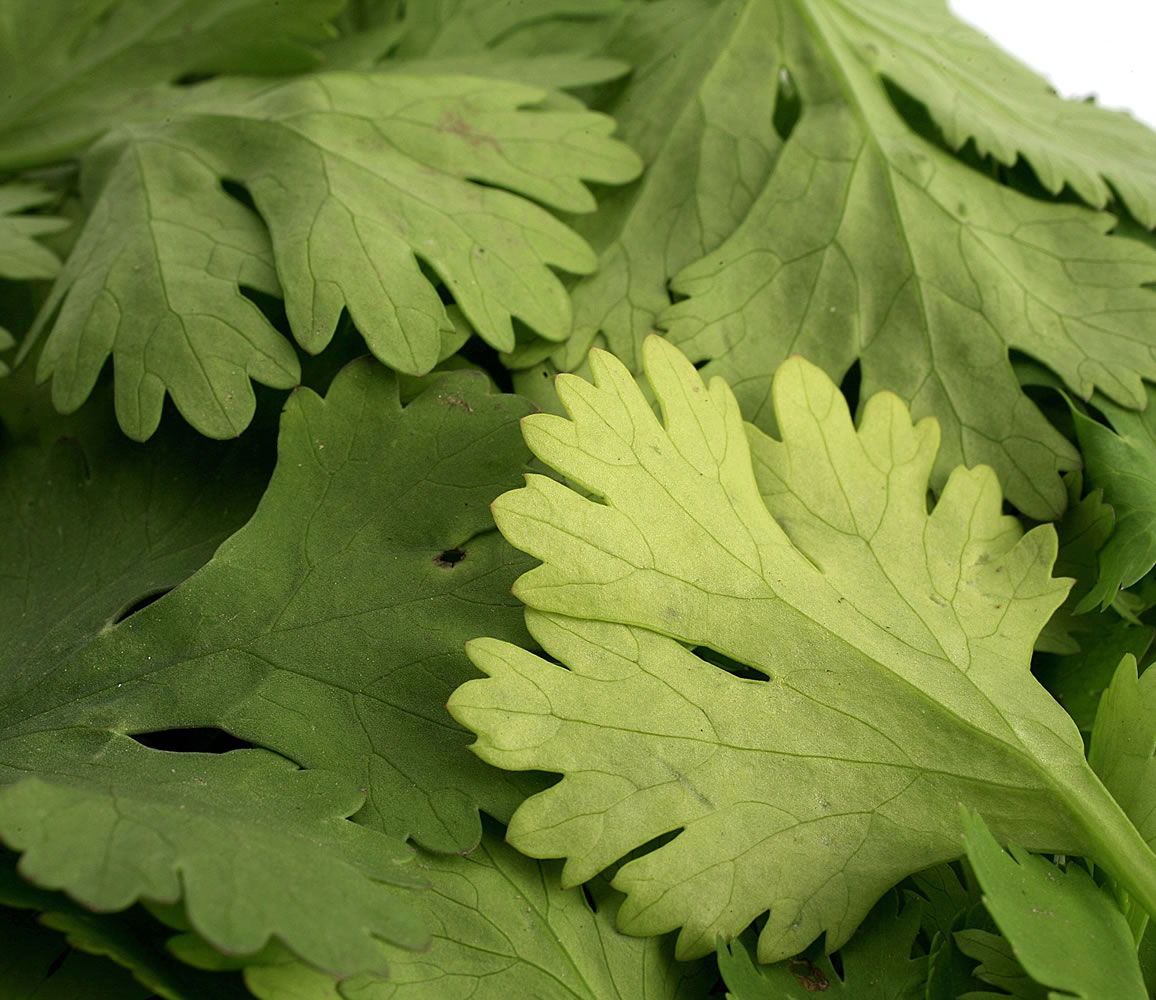If you like the flavor of salsa served in Mexican restaurants, you will love cilantro. The leaves have an instantly recognizable fragrance when you cut them that fills a room. Sometimes called Chinese parsley, cilantro has a distinctive aroma and flavor that is also part of the Caribbean and Asian food traditions, lending flavor to reca?to, salsas, curries, salads, chutneys, herbed butters, and meat marinades.
All the parts of the plant are edible, but the fresh leaves and dry seeds are most often used in cooking. Cilantro looks like flat leaf Italian parsley, but the leaves are thinner. It grows quickly in the cool weather of spring and fall, creating a rosette of lacy leaves. When the weather gets warm, the plants send up a long, lanky flower stalk bearing flat umbels of white or pinkish blossoms, which later produce coriander seeds. The coriander seeds have a lemony citrus flavor when crushed that has been described as warm, nutty, spicy and orange. Coriander’s flavor makes it the perfect complement for pickling, sausages and breads, and it is one of the central spices in garam masala.
Cilantro is low in saturated fat and cholesterol. Its caloric value is nearly nonexistent. It is a good source of dietary fiber, vitamins A, C, E, K and calcium, iron, potassium and magnesium. Just 1/2 cup of fresh cilantro provides 270 IU of vitamin A and 16 percent of the daily value recommended for vitamin K.
The vitamin K and calcium content of cilantro helps build strong bones, teeth and hair. Cilantro is considered the “anti-diabetic” plant in some parts of Europe. Research has shown that it may lower cholesterol and blood pressure.



